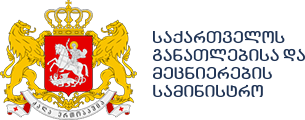
ავტორთა გაიდლაინი
სტატიის გაფორმების წესი:
სტატია უნდა წარმოადგენდეს ორიგინალურ გამოკვლევას, რომელიც ბეჭდური ან ელექტრონული სახით არ გამოქვეყნებულა.
სტატია იგზავნება სარეცენზიოდ ორ ექსპერტთან და დასაბეჭდად მიიღება ორი დადებითი რეცენზიის შემთხვევაში.
რეცენზენტების ვინაობა კონფიდენციალურია.
ავტორი ვალდებულია, გაითვალისწინოს რეცენზენტების შენიშვნები და სტატიაში, საჭიროებისამებრ, შეიტანოს შესაბამისი შესწორებები.
სტატიაში ავტორის მიერ საკუთარი ნაშრომის იმგვარად დამოწმება, რითაც შესაძლებელია დადგინდეს მისი ვინაობა, დაუშვებელია - სარეცენზიოდ გამოგზავნილ ვერსიაში სტატიის ეს მონაკვეთები უნდა შეიცვალოს სათანადოდ, რაც შემდგომში სტატიის დასაბეჭდად მიღების შემთხვევაში - აღდგება პირვანდელი ფორმით სტატიის საბოლოო რედაქტირებისას.
სტატიების გამოგზავნა შესაძლებელია მეილზე - logos@tsu.ge
სტატიის გაფორმების წესი:
პუბლიკაციის ენა - ქართული ან ინგლისური
I გვერდი- ავტორის (ავტორების) სახელი, გვარი, სტატუსი, საკონტაქტო მონაცემები
საკვანძო სიტყვები (3-5)
აბსტრაქტი ( ინგლისურად) - 100-250 სიტყვა
II გვერდი- სტატიის სათაური
სიტყვების რაოდენობა- მინ. 2000 სიტყვა (სქოლიოებისა და ბიბლიოგრაფიის გარეშე)
შრიფტის ზომა- 11
ფურცლის ზომა- A4
მინდორი- ზევით-ქვევით -2 სმ; გვერდებზე- 2,5 სმ
დაშორება სტრიქონებს შორის- 1,5 სმ
ფონტი- Sylfaen (ქართულისთვის და სხვა ენებისთვის) Unicode (ბერძნულისთვის)
გვერდები - ინომრება გვერდის მარჯვენა ზედა კუთხეში შენიშვნები უნდა განთავსდეს სქოლიოებში (შრიფტის ზომა 10) ბიბლიოგრაფია - ანბანურ რიგზე, ქრონოლოგიურად, სტატიის ბოლოს.
ციტირების სტილი
ანტიკური ხანის ავტორთა ციტირება:
ავტორების სახელთა და ნაწარმოებების სახელწოდებათა შემოკლებების წესი ემყარება გამოცემას: Greek-English Lexicon. 1996. Compiled by Henry George Liddell and Robert Scott (LSJ). Oxford:Oxford University Press.
http://www.stoa.org/abbreviations.html
მაგალითები:
Eur. Supp. 187-90. Thuc. 1.80.2.
Arist. Poet. 1452a15-1453b10.
Ar. Ran. 435-37.
Il. 6.354-58.
ბიბლიოგრაფია (ბ) და სქოლიოები (ს): ნიმუშები
წიგნი
ა) ერთი ავტორი
(ბ) გორდეზიანი, რისმაგ. 1988. ბერძნული ცივილიზაცია. ნაკვეთი I. თბილისი: მერანი.
Braund, David. 1994. Georgia in Antiquity. A History of Colchis and Transcaucasian Iberia 550 BC-AD
- Oxford: Clarendon Press. (ს) გორდეზიანი 1988, 59-60. Braund 1994, 115-16.
ბ) ორი ან მეტი ავტორი
(ბ) ტონია, ნანა და ქეთი ნადარეიშვილი. 2003. პენელოპე. ანტიკური სამყაროს ქალთა პორტრეტები. თბილისი: ლოგოსი.
Payne, Blanche, Geitel Winakor and Jane Farrell-Beck. 1992. The History of Costume: From the Ancient
Mesopotamians Through the Twentieth Century. New York: Harper Collins. (ს) ტონია და ნადარეიშვილი 2003, 23-28.
Payne, Winakor and Farrell-Beck 1992, 455-59.
გ) რედაქტორი
(ბ) გორდეზიანი, რისმაგ და ნანა ტონია, რედ. 2007. ანტიკური ლიტერატურა. თბილისი: ლოგოსი. Pabel, Hilmar M. and Mark Vessey, eds. 2002. Holy Scripture Speaks: The Production and Reception of
Erasmus’ Paraphrases on the New Testament. Toronto: University of Toronto Press. (ს) გორდეზიანი და ტონია 2007, 213-14.
Pabel and Vessey 2002, 175-80.
სტატია
ა) პერიოდულ გამოცემაში
(ბ) ბეზარაშვილი, ქეთევან. 2005. „იოანე პატრიწის ე. წ. ბოლოსიტყვაობის ზოგიერთი ადგილის გაგებისათვის: „მეარისტოტელურა.“ ლოგოსი. წელიწდეული ელინოლოგიასა და ლათინისტიკაში 3:17-43.
Price, Simon. 2012. “Religious Mobility in the Roman Empire.” Journal of Roman Studies 102: 1-19. (ს) ბეზარაშვილი 2005, 10-13.
Price 2012, 5-12.
ბ) სტატიათა კრებულში
(ბ) ალექსიძე, ზაზა. 2000. “ლუვრი, სინას მთა, ნაზარეთი.“ ΜΝΗΜΗ. ალექსანდრე ალექსიძის ხსოვნისადმი მიძღვნილი კრებული. რედ. რისმაგ გორდეზიანი, 10-24. თბილისი: ლოგოსი.
Louth, Andrew. 2009. “The Reception of Dionysius in the Byzantine World: Maximus to Palamas.” In Re- Thinking Dionysius the Areopagite, edited by Sarah Coakley and Charles M. Stang, 55-69. Oxford: Wiley- Blackwell.
(ს) ალექსიძე 2000, 15.
Louth 2009, 63.
გ) კონფერენციის მასალებში
(ბ) მჭედლიძე, მაგდა. 2011. „ღვთაებრივი მრისხანება და ეშმაკეული რისხვა“. მითოსური აზროვნება, ფოლკლორი და ლიტერატურული დისკურსი. ევროპული და კავკასიური გამოცდილება. ვაჟა- ფშაველას დაბადებიდან 150-ე წლისთავისადმი მიძღვნილი V საერთაშორისო სიმპოზიუმის - ლიტერატურათმცოდნების თანამედროვე პრობლემები- მასალები. ნაწილი II: 427-39. თბილისი:ლიტერატურის ინსტიტუტის გამომცემლობა.
Oettinger, Norbert. 2008. “The Seer Mopsos (Muksas) as a Historical Figure.” In Anatolian Interfaces.Hittites, Greeks and their Neighbours. Proceedings of an International Conference on Cross-Cultural Interaction, edited by Billie Jean Collins, Mary R. Bachvarova and Ian Rutherford, 63-66. Oxford: Oxbow Books.
(ს) მჭედლიძე 2011, 430-31. Oettinger 2008, 65.
დისერტაცია
(ბ) Marthaler, Berard Lawrence. 1968. “Two Studies in the Greek Imperial Coinage of Asia Minor.” PhD diss., University of Minnesota. (ს) Marthaler 1968, 55.
წიგნის მიმოხილვა
(ბ) Crawford, Michael . 1989. Rev. of A.M. Burnett, Coinage in the Roman World. In Numismatic
Chronicle 149, 244-45. (ს) Crawford 1989, 244. ელექტრონული მასალა
(ბ) Mitchell, William J. City of Bits: Space, Place, and the Infobahn [book on- line]. Cambridge, MA: MIT Press, 1995, accessed 29 September 1995;
http://www-mitpress. mit.edu:80/City_of_Bits/Pulling_Glass/ index.html; Internet. (ს) Mitchell 1995.
ჟურნალ „ლოგოსის“ სარედაქციო კოლეგია







